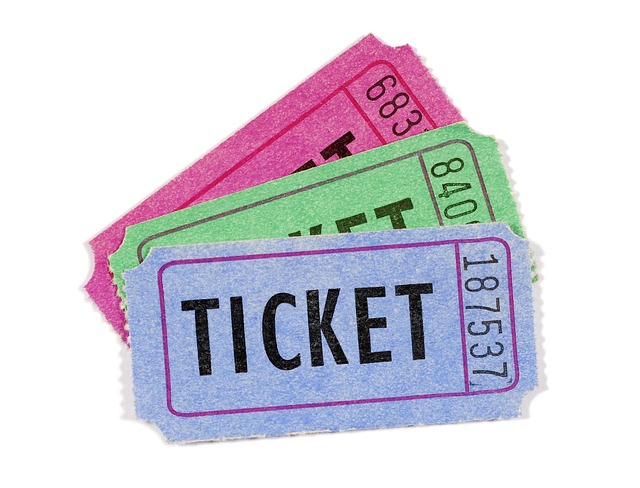Vignette Tickets vs. Traditional Tolls: Which Is Right for You?
As the landscape of transportation evolves, so too do the means by which we fund our roads and highways. Whether you’re a daily commuter, an occasional traveler, or a logistics manager, understanding how to navigate the toll systems is essential. Two of the most prominent methods of toll collection today are vignette tickets and traditional tolls. Each system has its advantages and disadvantages, making it vital for road users to assess which is right for their specific needs. This article delves into vignette tickets and traditional tolls, exploring their differences, benefits, drawbacks, and helping you decide which option suits your circumstances best.
Understanding Vignette Tickets
Vignette tickets are pre-purchased road usage permits that allow drivers to use certain highways, typically in European countries. They can be compared to a parking pass that you buy for a specific duration, granting you access to certain roads or regions without the need for stopping at toll booths. The vignette system is popular in countries such as Austria, Switzerland, Hungary, and the Czech Republic. Here are some key aspects of vignette tickets:
How Vignette Tickets Work
Vignette tickets can be bought for varying durations, such as 10 days, one month, or an entire year. After purchasing, drivers must display the sticker or pass on their vehicle’s windshield. The effectiveness of this system lies in its operational simplicity; once you’ve paid for the vignette, you no longer need to worry about stopping to pay tolls during your journeys.
Benefits of Vignette Tickets
Vignette tickets come with several advantages that appeal to many drivers:
- Simplicity: Once purchased, they eliminate the need for cash or electronic toll payments at different points along the road, reducing stress during travel.
- Cost-Effective for Frequent Drivers: If you frequently use a particular route, a vignette could prove to be more affordable than paying per toll.
- Reduced Travel Time: With no stops at toll booths, drivers can maintain their speed and reach their destinations more quickly.
- Easy to Purchase: Vignettes are generally easy to obtain, with many options available online, at gas stations, or at border points.
Drawbacks of Vignette Tickets
Despite their many advantages, vignette tickets might not be the best choice for everyone. Here are some potential downsides:
- Fixed Costs: The upfront payment can be expensive, particularly for those who do not use the highways frequently. If you only occasionally travel certain roads, it may not be worth the investment.
- No Refunds: Once purchased, the vignette cannot be returned, so if your plans change and you don’t use it, you lose that cost.
- Time Limitations: Depending on the duration you select, you could be pressured into using the roads more frequently than you would prefer, just to get your money’s worth.
Examining Traditional Tolls
On the other hand, traditional tolls operate through a pay-per-use system where vehicles are charged a fee upon passing through designated toll booths. This method has been a staple in road funding for decades, particularly in the U.S. and some parts of Europe. Below are some essentials related to traditional tolls:
How Traditional Tolls Work
Drivers need to pay a set fee every time they cross a toll booth, which can vary based on the vehicle type, time of day, or distance traveled. In many areas, electronic payments are available through transponders, making the process quicker and more efficient.
Benefits of Traditional Tolls
Traditional tolls provide distinct advantages:
- Pay-as-You-Go: You pay only for the distance you travel, which can be beneficial for infrequent drivers.
- Transparent Pricing: The toll rates are clear upfront, so drivers know exactly what they will be paying.
- Flexibility: You can choose your routes without being locked into long-term costs associated with a vignette ticket.
Drawbacks of Traditional Tolls
While traditional tolls have their advantages, there are also some disadvantages:
- Frequent Stops: Depending on your route, you may have to stop at multiple toll booths, which can disrupt your travel flow.
- Potential for Congestion: Toll booths can lead to traffic jams, particularly during peak hours, which can negate travel time benefits.
- Costs Add Up: For regular users, especially on routes with multiple tolls, costs can accumulate significantly over time.
Comparative Analysis: Vignette Tickets vs. Traditional Tolls
When deciding between vignette tickets and traditional tolls, it is important to weigh the factors that matter most to you:
Cost Considerations
Cost is often the biggest deciding factor. For those who travel infrequently, traditional tolls allow for cost control, but can become pricey for regular highway users. Vignettes have a higher upfront cost but can be more economical for frequent travelers on particular routes.
Travel Frequency
Your travel frequency also plays a crucial role in determining which option is best. If you’re a daily commuter on a particular route, a vignette may pay off in the long run. Conversely, if your travel is sporadic, traditional tolls might suit you better.
Convenience vs. Flexibility
Vignette tickets provide a convenience factor by reducing the need to stop for payments, which can be invaluable for longer trips. However, traditional tolls give you flexibility to choose your routes without long-term commitments.
Making the Right Choice for Your Journey
Ultimately, the decision between vignette tickets and traditional tolls boils down to your individual preferences and travel habits. Consider your typical routes, how often you travel, and your budget. Analyze the pros and cons of each option based on your unique situation.
For individuals who frequently traverse certain road networks and desire a hassle-free experience, a vignette ticket may be the most cost-effective and time-saving route. On the other hand, for those who prefer greater control over their expenditures and travel less frequently, traditional tolls could be the more advantageous choice.
Conclusion
The evolution of road payment systems reveals much about our changing transportation needs and habits. Understanding vignette tickets versus traditional tolls empowers drivers to make informed choices that align with their travel patterns. Whichever method you choose, being educated about these systems will ensure a smoother, more enjoyable journey on the roads ahead.


